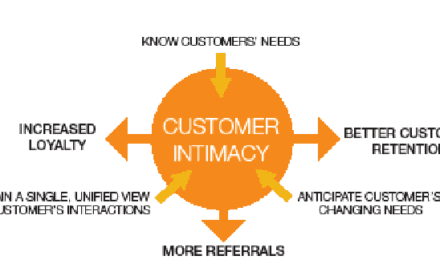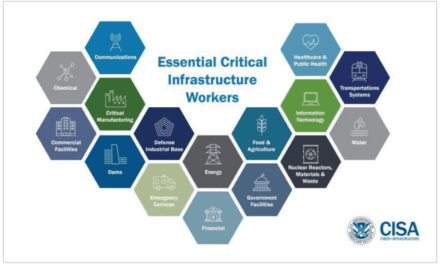Career Management: Student Loans | April 2015 Hearing Review
Hearing care professionals can benefit from loan repayment strategies
The total of student loan debt has grown dramatically in our country and affects millions of Americans. It now represents one of the largest categories of consumer debt—second only to home mortgages. Here are some tips for effectively dealing with student loan debt.
It’s easy to understand why many of the hearing care providers I work with feel like it is challenging to take control of their student loans and make forward progress. Let’s review some important action steps you can take that should help you move toward financial freedom:
1) Collect the important information for each loan.
2) Organize and review your total student loan debt information.
3) Create your strategy for paying your student loans off.
4) Celebrate your accomplishments and maintain your motivation.
Step 1: Collect the important information for each loan.
It is vital that you have all of the information for each of your student loans. Gather the paperwork that you have and put it in one central location. You should also be able to log into the National Student Loan Data System (NSLDS) to see a full list of your federal student loans. If you need to reset your PIN number, there is a link there to do it by selecting the “FAQs” in the site navigation bar.
You may also want to request a free credit report from a credit bureau to ensure that your list of student loans matches what is on your credit report—particularly if you have any private student loans. What is the important information that you need? Start with this checklist:
- Lenders/loan servicers
- Website addresses; Passwords
- Types of loans (particularly if each is Federal or Private)
- Dates of issue
- Account numbers
- Original loan amounts
- Current balances
- Interest rates
- Payment due dates (and starting dates or triggers)
- Repayment options or programs
- Grace periods
- Minimum monthly payment amounts
- Dates of expected payoffs
- Any other specifics that are important to each loan
Step 2: Organize and review your total student loan debt information.

Whichever one you choose should have a place to organize all of your debt and then help you model various strategies to pay it down. For example, after you enter in your loans, it should allow you to see how long it takes to pay off each loan and the total interest that you will pay under different scenarios.
You will also want to be able to test different payment amounts such as if you are able to make larger payments to pay off the loans sooner. There are also some very helpful financial aid calculators online.
Enter the information you collected in Step 1 into your organizational tool. While the number may appear to be intimidating or overwhelming at first, it is the best way to get a real grasp on what you owe and to start creating a plan to take control of your debt and pay it off.
Step 3: Create your strategy for paying your student loans off.
It’s important to note that, as you review your options, your student loan repayment plan must include the minimum payments for all of your loans. You don’t want to miss payments and incur late fees or additional interest, or cause other complications, such as a negative hit to your credit score.
Another important action item is to have an overall budget to ensure that you are financially stable enough to afford the student loan repayment plan you are considering. You should balance your desire to pay off this debt with the need to have a reserve fund and meet your other financial obligations. You also need to be mindful of any other debt you have and ensure you are doing what is best for reducing your total overall debt. After you have done so, determine the amount each month that you can allocate toward paying down your student loans.
As you dive into analyzing your student loans, you may be struck by several possible scenarios. For example, if you notice that one of your student loans has a much higher interest rate than the others along with a low principal balance, you may get excited about tackling that one first. These types of discoveries will help you create your strategy for paying off your student loans.
There are two common ways to strategize paying off your debt:
1) The avalanche method simply means that you identify the loans with the highest interest rate and pay these off first. Overall, this will save you money. While technically this one makes the most financial sense, it often can be more challenging from a motivational standpoint than the snowball method. This is particularly true if the highest interest rate loan has a really large balance and will take many years to pay off.
2) The snowball method has you pay off your smallest balances first. Many people become extremely motivated as they see a student loan get paid off and are eager to move on to paying off the next one. It may cost more in the interest you pay. However, over a long term, it may help you maintain your motivation better to achieve your goals and become debt-free.
You can also use a hybrid of these methods, such as paying off a few small loans first (or perhaps PLUS loans because you promised your parents to pay those first), and then switching to tackling the loans based on the interest rate. You should analyze the difference between the interest you will pay using each method to help you determine your strategy.
It’s also a smart idea to keep up on developments regarding student loans. New government programs may emerge that make paying off your student loans easier. Your employer may offer assistance or incentives as well.
Step 4: Celebrate your accomplishments and maintain your motivation.
Paying off a student loan is cause to celebrate! You’ve made great progress, but probably don’t want to blow your budget, so consider these ideas:
- Share the news with your friends and family by social media. You will not only get congratulatory messages—you will also be inspiring others!
- Create a visual progress chart so you can see your debt level going down. Pair this with a fun ritual for updating it.
- Treat yourself to a hike with an amazing view. As you take in the beauty, congratulate yourself on taking control of your financial destiny and achieving each milestone.
Some final thoughts…this journey will be different for each person. Be strong in your commitment to your goals and vision for your future and create the most successful journey for you.
Cynthia Boman Thompson, MS, CFP, is the director of Strategic Business Unit Finance at Audigy Group. She presented “Taking Control of Your Financial Goals: Tackling Student Loans” to attendees at the AudiologyNOW! 2015 AAA Convention in San Antonio, Tex, in March 2015.
CORRESPONDENCE can be addressed to Cynthia Boman Thompson at: [email protected]
Citation for this article: Thompson, CB. Taking Control of Your Student Loans. Hearing Review. 2015;21(1):28.






